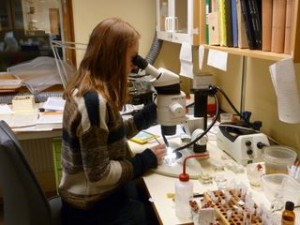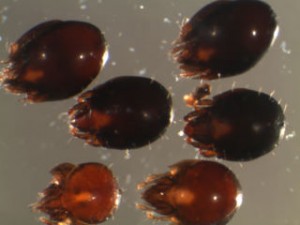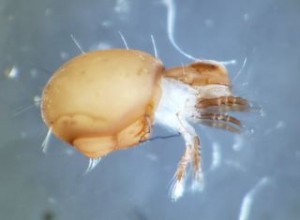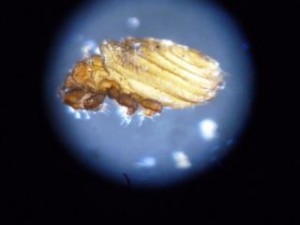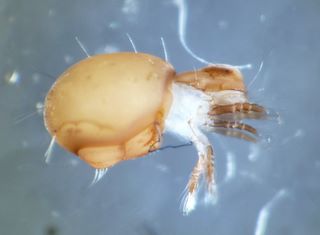
Sorry you haven’t heard from me for a while. I haven’t been hibernating all winter but I have been hidden away in a lab with my eyes glued to a microscope! I’ve been working through lots of samples taken from Racomitrium heath (a type of moss which grows on mountain tops). So whilst I’ve been very busy there hasn’t been much to report…..until now!
There are no lengths a Natural Talent Apprentice won’t go to in order to learn about their specialist area, including braving the freezing January temperatures of Scandinavia! I’ve recently come back from a fantastic trip to Sweden where I got to spend time with a lovely mite taxonomist, Astrid, and learn more about how to identify my new favourite creatures! It’s incredibly hard to find expertise on mites in the UK, sadly not enough people work on this fascinating and important group so I was lucky to be introduced to Astrid who was so enthusiastic and willing to help. I spent a week in the soil invertebrate lab at SLU (the Swedish University of Agricultural Sciences) in Uppsala and was able to take advantage of all the specimens and mite literature there to help me identify some of my more difficult specimens. Uppsala seemed a particularly appropriate place to learn about taxonomy given that the ‘Father of Taxonomy’ himself Carl Linnaeus lived, studied and taught there in the 1700’s! It’s thanks to him that we have a hierarchical classification system for organisms with binomial Latin names for species that can be used across the globe.
I also got to spend a bit of time with a Collembola (or Springtail) specialist and have a closer look at some of the little chaps I had found. It was very exciting to be in a place where people are working on the same groups as me and to be able to spend so much time one on one with experts. It was also snowy and very beautiful there which was an added bonus!
Mites (or Acari to give them their formal name) are a difficult group to study. They are very small, in fact the name Acari comes from the Greek meaning ‘small’. The biggest can be 1-2cms but most are less than 1mm in size with a great many less than 0.2mm! They are so small that I have to use a single eyebrow hair to move them around! They are also a very large and very diverse group with around 55,000 species currently described. However this is thought to be a mere fragment of the actual total which has been estimated at 1 million or more species, indeed new species are being discovered routinely. They are also surprisingly complex with an enormous amount of terminology to get your head around, most of which I’d never encountered before even when studying other invertebrates. On top of all that, there is no published key to help you identify British mites. So, knowing all that you may be wondering why I’m so mad about mites and haven’t been completely put off? Well, whilst it does make them a huge challenge, it also makes them very enigmatic and completely fascinating!
There aren’t many animals you can find in almost all habitats on Earth but mites are one of them. From the Arctic to the desert, down to the icy depths of the Pacific oceanic trenches, even to the hair follicles on our faces- mites have adapted to life. They are also hugely beneficial and contribute to vital ecosystem services such as decomposition and nutrient cycling and pest control (although many can also be pests themselves!). Mites, along with Springtails are the dominant arthropods in soil. Of these, one group the Oribatid mites are the most abundant and these are the ones I’ve been focussing on. They are actually very cute (yes, really!) and bumble along slowly in the soil feeding mainly on fungi and decaying plants. They are also very well armoured, some of them look a bit like little tanks!
As much as I have grown to love them, they are difficult and without people like Astrid and my mentor Helaina helping me to unlock their secrets I don’t think I would have got anywhere. I have gradually built up my own collection of literature, specimens and a library of images taken down the microscope so I’m definitely on my way to becoming a fully fledged Acarologist (mite expert). One thing’s for sure, having delved into the world of the soil I’ll never complain about identifying another invertebrate group again!
As well as identifying mites, I’ve also had the opportunity recently to give a couple of talks about soil invertebrates to both the Aberdeen and Edinburgh Entomological clubs. I had a fantastic response to both and it was lovely to get the chance to talk about my beloved little critters and also to spread the message about how vital soil biodiversity is, especially to such an enthusiastic audience.
It’s sad that there aren’t more budding acarologists out there but I feel very privileged to have become one and now I’m hooked I definitely want to carry on studying them long after my apprenticeship finishes!
Hannah
Soil Biodiversity Apprentice


